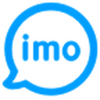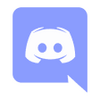An application available on mobile devices dedicated towards increasing user productivity and organization
An application available on mobile devices dedicated towards increasing user productivity and organization
Popular programs in Instant Messaging
What is Slack
Slack has quickly become one of the premier communication platforms of choice for businesses everywhere, and that's in large part due to its rich and flexible feature set. There was a time when Skype looked like it was going to set the world on fire, but Slack has largely supplanted it, due in significant part to the manner in which it's been custom-built to suit the needs of business owners, and particularly those working in the world of high tech, project-oriented businesses. But it's not a one size fits all solution for communications in your office. There are no VoIP options, and it's not a sensible choice to replace emails entirely. Instead, it's a supplemental platform, a way to keep all your teams and departments on the same page, and an opportunity to avoid miscommunications that can cost your company valuable time and money.
That said, it's a pretty comprehensive choice when you're looking for a singular collaboration platform. Its main advantage is how modular it is. While Slack doesn't have everything you need right out of the box, chances are that there's an API that can connect you to a third party platform that can serve your needs admirably. Whether that means integrating a dedicated scheduling interface through Google Calendar, improve the efficiency of your marketing and sales team with SalesForce, or connect your conversation with your software development arm through GitHub, there's a portal that's right for you. Setting up these integrations is a mostly painless affair, and they generally work pretty seamlessly with the Slack interface. And if you have a problem setting up the integrations yourself, Zapier will always work in a pinch.
At its heart, Slack is an instant messaging platform like AIM or Trillian, but as with most things, the devil is in the details. In this case, it all comes down to the interface. Slack works with a channeled interface. What that means is that you can break down your company's communications into any number of different channels, blocking out the noise and focusing on the signal. Whether that means breaking down channels by project, department, or both, you can make communications more streamlined, and seamlessly allow or deny your staff access to specific channels as the situation warrants. Once a channel's run its course, you can archive it to reduce the clutter while still having access to all the information contained therein. There's also support for direct messages and private conversations, so you can communicate on a one on one basis and establish sidebars for more technical conversations. The interface is basic, but the customization options aren't. Administrators have a lot of control over how their Slack interface is designed, and each individual user can set up their own UI that meets their particular needs.
Pros:
- Channeled conversation system allows for more intuitive conversations
- Vast amount of integrations with third party platforms
Cons:
- No native options for voice conversations
- Requires structured organization to work as well as it should






